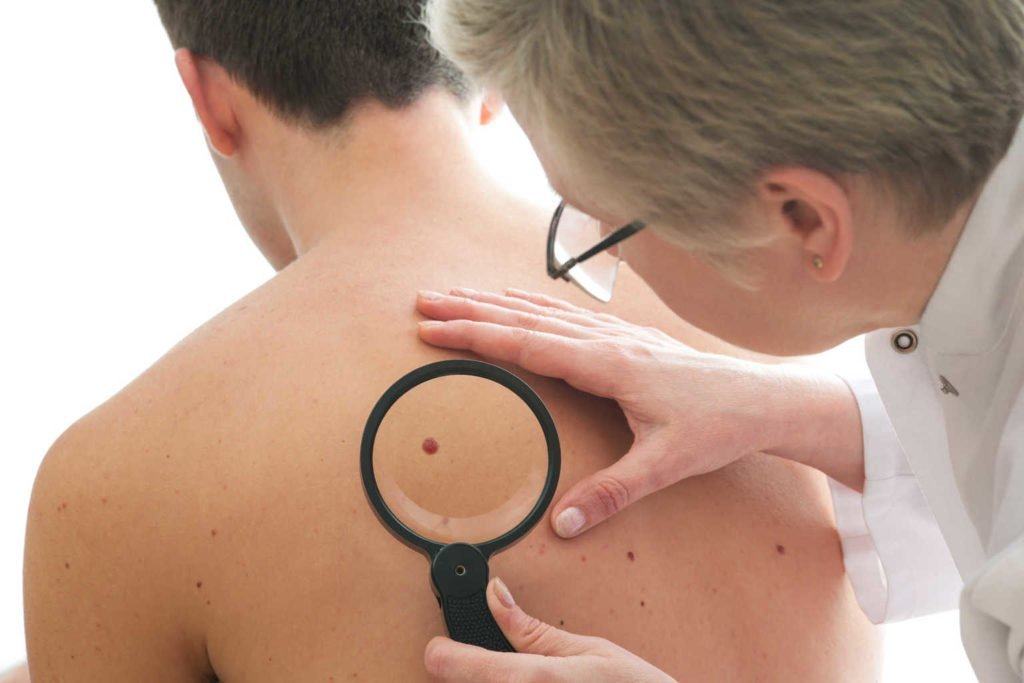Neurofibromatosis type 1 is a genetic disease or hereditary disease, although 50% of cases do not show members of patients’ family have the disease. One out of 3500 people can experience this disease. It is caused by a change in a protein called neurofibromin which later causes tumor growth, both benign and malignant. Skin disorders seen in this disease are flat blackish-brown spots, about 0.5 cm to 1.5 cm found 6 or more. These spots are called café-au-lait spots. These patches are often an early sign of neurofibromatosis, which appears since the first year of life.
The presence of black spots around the armpits and groin that appears between the ages of 3 to 5 years is a characteristic sign of this disease. Skin-colored or blackish lumps are signs of nerve tumors on the skin called neurofibromas. These lumps begin to appear at puberty with dense, supple lumps with varying sizes found on any part of the body. If there are 2 or more neurofibromas and one blackish colored neurofibroma on top found with excessive hair with a larger and wider lump size, it is a characteristic sign that can be found since birth. Neurofibromatosis are reported from 30-50% of patients. It shows the presence of neurofibromas with larger and wider lump size. These complaints will occur in the course of nerves causing bone pain and bone damage.
Neurofibromatosis type 1 does not only affect the skin but also other body parts such as eyes and bones. Some abnormalities can be found in the eye, such as the presence of blackish protrusion located on the iris of the eye called Lisch’s nodules, but this condition does not cause vision problems. Tumors of the optical nerve, referred to as optic gliomas, are found in only 1% of cases, and they reduce the vision in patients while bone disorders that appear are scoliosis (crooked spine) which is a bone disorder that is commonly found. It occurs to 10% of the patients and usually at the age of 10 years. Another bone manifestation is a long broken bone healing disorder, especially the shin.
Impaired long bone growth causes short posture. If two or more abnormalities are found on the skin, eyes or bones above, neurofibromatosis type 1 can be diagnosed. Another complication that needs to be observed is learning disabilities experienced by children, especially in reading and arithmetic. Learning difficulties are important things that should be the main concern of parents, and they are found in 50% of the cases. Some cases of type 1 neurofibromatosis in children can also cause cancer in several organs, mainly blood and muscles, so it is necessary to have further examination of medical specialist so the neurofibromatosis can be treated quickly and appropriately.
Neurofibromatosis type 1 is a multisystem disorder that requires treatment from various disciplines. Some therapies are still being debated. Neurofibroma skin disorders can be treated using surgical techniques while the black spot abnormalities can be treated by administering sunscreen, vitamin D3 topical or by using laser therapy. Screening for abnormalities in the eyes and bones must be evaluated as early as possible so that treatment can be done immediately and does not cause dysfunction in these organs. Learning difficulties experienced are important things to watch out for and require assistance from all fields of science. Early recognition of abnormality signs found in neurofibromatosis type 1 can help patients to get treatment more quickly and precisely, thus providing a better quality of life for patients.
Author: dr. Damayanti, SpKK, FINS-DV
Details of this research available at:
https://www.pagepress.org/journals/index.php/dr/article/view/8092
Dyatiara Devy, Damayanti. 2019. Department of Dermatology and Venereology, Faculty of Medicine, Universitas Airlangga / Dr. Soetomo General Hospital, Surabaya, Indonesia





